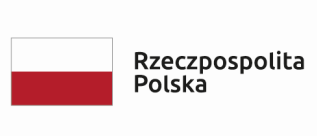
A system for testing liquid metals, alloys, glasses, slags, and other materials properties
The system for testing liquid metals properties was developed in cooperation with the Faculty of Foundry Engineering of the AGH University of Science and Technology and the Aleksander Krupkowski Institute of Metallurgy and Materials Science PAS. It allows testing the properties of materials in the liquid phase at temperatures ranging from room temperature to 2100°C. The system can operate in a high vacuum or a protective gas atmosphere, so it is possible to monitor the influence of various external factors. The goniometer of the liquid phase of metals enables the measurement of the contact angle and droplet geometry using different methods of releasing and depositing drops of the tested material on the substrate. The system provides information on the physical properties of various materials, like metals, alloys, slags, and glasses.
The system was awarded the Gold Medal of the Poznań International Fair in 2021.
The most significant features of the system for testing liquid metals and other materials in the liquid phase:
- Work in high vacuum conditions and under atmospheric pressure of protective gases
- Determination of material characteristics: contact angle, surface tension, density, viscosity, adhesion work (calculated and measured)
- Study of high-temperature phenomena at temperatures up to 2100°C, in particular melting, crystallization, nucleation and crystal growth, wetting, spreading, infiltration
- Study of the impact of selected factors: temperature, atmosphere, surface condition, chemical composition
- Observation of the interaction process in the liquid/solid system with the recording of phenomena occurring in non-reactive and reactive systems. Visualization is carried out using a high-resolution, high-speed camera.
- A 5-axis goniometer enables precise positioning, tilting, and rotating of the observed drop
- Test equipment: a dosing unit for squeezing liquid metal directly onto the tested substrate and a test table adapted to capture the tested refractory substrates and lift them to the working height. The table also allows the substrate rotation. It ensures that the sample can be centered relative to the camera in the event of a shift.
- Measurements carried out by the method of lying, hanging, rolling, or large drop, as well as combinations of these methods
- Possibility of cleaning drops from the oxide coating
- Possible procedures: drop suction, drop rolling, drop tilting
- Ability to perform alloy synthesis during the test as well as thermocycling procedures
- The test chamber is equipped with optical windows enabling the observation of the shape of a drop of molten metal, e.g. during the process of melting metal on the substrate, squeezing the drop onto the substrate or examining the shape of a hanging drop
- Observation windows are protected against fogging by shutters
- Line transfer for placing samples
- Easy access to all components in the chamber
- The chamber is installed on a mobile frame
The presented system is currently used in research on gasars, providing undoubtedly scientifically significant data. More information about the developed solution and its possible applications is available in English on the website polanddaily24.com and in Polish on the websites of AGH, naukawpolsce.pl.
Specification:
| Heating | up to 2100°C with the possibility of setting the speed of temperature rise, stabilization and decrease up to 15 steps. |
| Water cooling power | not less than 5kW |
| Thermocouple | up to 1200°C type K above 1200°C type C |
| Temperature stabilization |
up to 400°C with resolution 0,1°C |
| Dosing unit movement | in the horizontal plane +/-8 mm |
| Pump |
diffusion pump with a pumping rate > 700 l/s for air oil pump with a pumping rate of not less than 16 m3/h |
| Vacuum measurement |
in the range of 1∙10ˉ² mbar to 1∙10ˉ⁹ mbar: with Bayard-Alpert head additionally in the low vacuum range: using the Pirani head integrated with the membrane head |
| Camera | placed on the XYZ manipulator with a 1:1 magnification lens and sample illumination |
| Equipment of the research chamber |
Dosing unit module, test table module, linear sample feeding module with a temperature stabilization system, cooling system, thermal screens (1 made of molybdenum, others made of 304 or 316 steel). Screens may also be made from high-temperature materials, e.g., tantalum. |
The high-temperature system is constantly used in scientific research conducted by the Aleksander Krupkowski Institute of Metallurgy and Materials Science PAS and the Faculty of Foundry Engineering of the AGH University of Science and Technology in Krakow (Poland). The experiments have led to interesting results showing the wettability and reactivity between liquid magnesium and metallic substrates (tungsten, silver, nickel, titanium, cast iron, and steel), presented at numerous conferences and in scientific publications.





